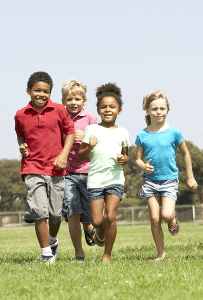Physical Literacy
Physical literacy is about children learning how to do basic movement skills such as running, kicking, throwing, catching and jumping. As children develop a wide variety of fundamental movement skills they will build competence and confidence to participate in different physical activities.
Children should have opportunities to be physically active in all four environments
- Ground (the basis for most games, sports, dance)
- Air (the basis for gymnastics, other aerial activities)
- Water (aquatic activities)
- Snow/ice (basis for winter sliding activities)
Physical literacy is the motivation, confidence, physical competence, knowledge and understanding to value and take responsibility for engagement in physical activities for life (International Physical Literacy Association, May 2014).
Date of creation: August 4, 2015
Last modified on: September 11, 2018
 Physical Literacy - Early Years
Physical Literacy - Early Years Physical Literacy - School Age
Physical Literacy - School Age